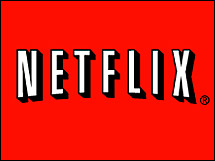 For a good two years I'd been crafting this concept of a website: a user-driven, wiki-style index of if and where (relative to your zip code) anything and everything can be recycled.
For a good two years I'd been crafting this concept of a website: a user-driven, wiki-style index of if and where (relative to your zip code) anything and everything can be recycled. Have a copy of George W. Bush's A Charge to Keep that you no longer want, but no one will take, let alone buy? No problem, your nearby facility, City Carton, just added book recycling to its repertoire. Does your company go through loads of ink cartridges that are ending up in landfills? Well, this company will pay you to let them recycle those. These are but a couple of the potential success stories I envisioned.
Anyway, I had the concept, the desire, and even a badass web design company to help make it happen. All I needed was a name.
And then, about a month ago, it came to me: Recyclopedia.
There it was. I felt like a schoolboy again, I was so excited! Within minutes, I called a friend to ask him if he was interested in helping. He was. From there, I began to brainstorm the logistics (possible costs, etc). But then, on a whim, I googled "Recyclopedia", which led me to THIS.
Recyclopedia.net? With a mixture of horror and wonder, I read the site's description:
Well, for the last month I sulked—like a big, bitter baby—about being beaten to the punch. After more reflection, though, I now realize that all that matters is that someone has put this idea into effect. So, if your city/county is missing (like mine is) from Recyclopedia's small but growing database of participating areas, please join me in heeding their call:
Anyway, I had the concept, the desire, and even a badass web design company to help make it happen. All I needed was a name.
And then, about a month ago, it came to me: Recyclopedia.
There it was. I felt like a schoolboy again, I was so excited! Within minutes, I called a friend to ask him if he was interested in helping. He was. From there, I began to brainstorm the logistics (possible costs, etc). But then, on a whim, I googled "Recyclopedia", which led me to THIS.
Recyclopedia.net? With a mixture of horror and wonder, I read the site's description:
This is a website to help you find information on how to correctly dispose of things. First choose your location and then find what you're trying to get rid of on the list. We'll tell you whether it can go out with the trash, in your blue box, to a charity or if it needs special attention.That there was a website out there whose mission so closely paralleled my own, that I could believe. But that it literally had the exact same name, that was just eerie.
Well, for the last month I sulked—like a big, bitter baby—about being beaten to the punch. After more reflection, though, I now realize that all that matters is that someone has put this idea into effect. So, if your city/county is missing (like mine is) from Recyclopedia's small but growing database of participating areas, please join me in heeding their call:
If you don't see your location listed, drop us a line and we'll tell you how to get your area online.







